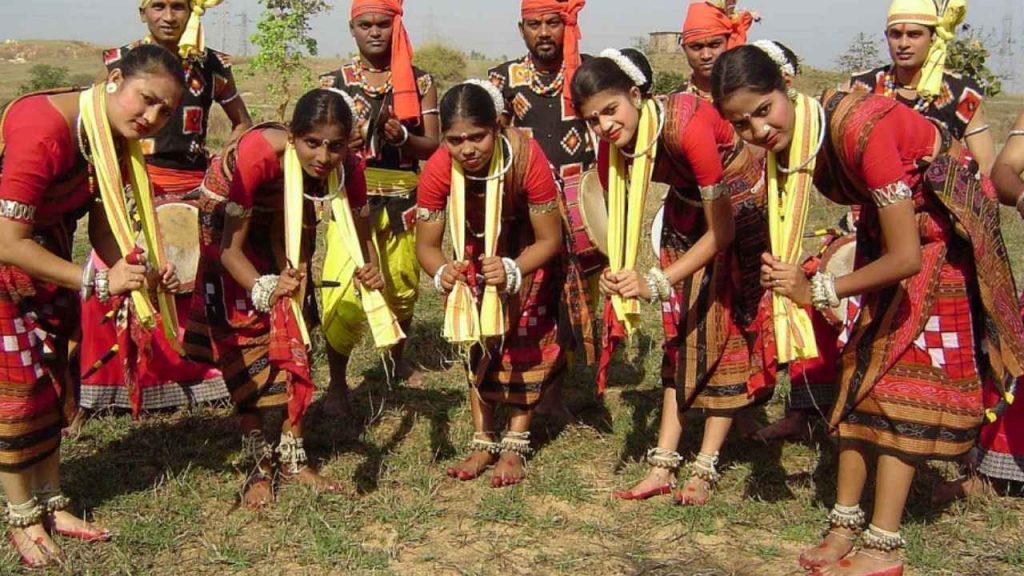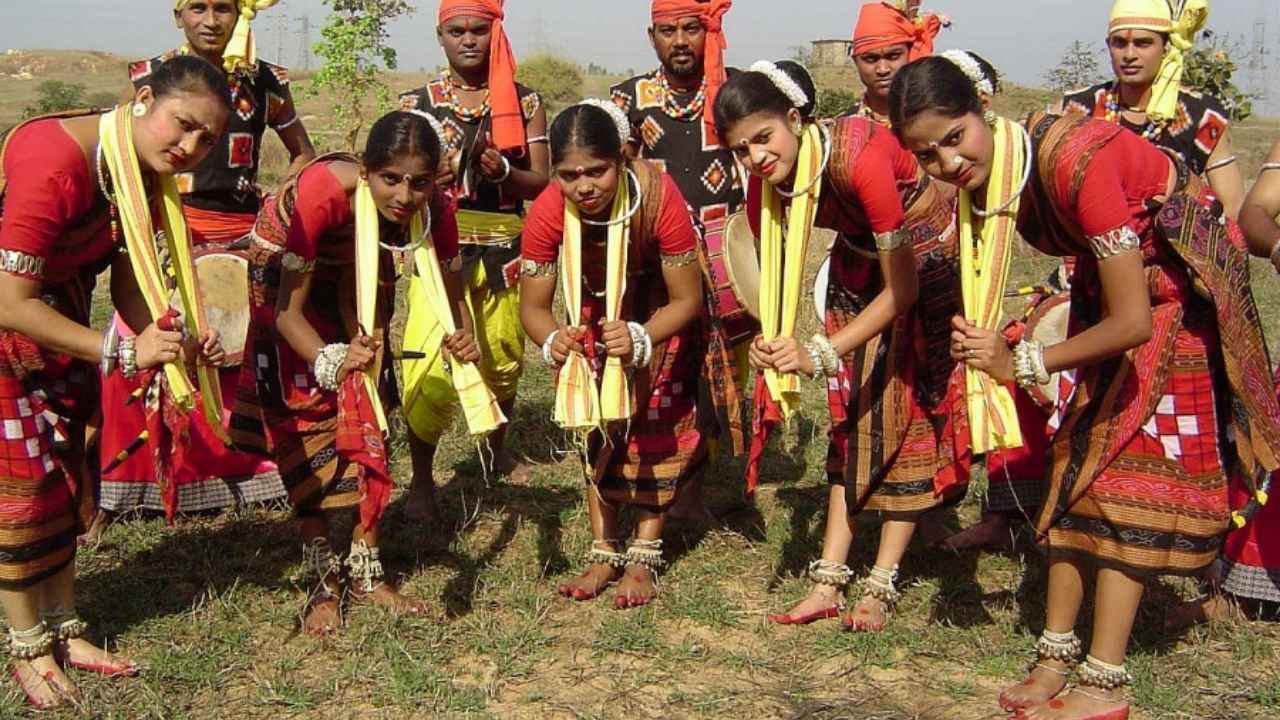In the 124th episode of his monthly radio program, Mann Ki Baat, Prime Minister Narendra Modi praised two exceptional initiatives from Odisha that highlight the power of community-driven efforts to preserve culture and raise awareness about vital issues. From the revival of the traditional Santhali saree by tribal women to a kirtan group creatively educating communities about forest conservation, these stories showcase the deep connection between tradition and progress.

This article will explore these remarkable initiatives in detail, offering a closer look at the efforts of tribal women and the Radhakrishna Sankirtan Mandali. We will discuss their cultural and environmental impact, the role of these community-driven movements, and the significance of their recognition by the Prime Minister.
Tribal Women and Kirtan Group from Odisha Receive Praise from PM Modi
| Topic | Details |
|---|---|
| Revival of Santhali Saree | Over 650 tribal women from Mayurbhanj, Odisha, have revived the traditional Santhali saree. Their efforts have transformed cultural preservation into a sustainable livelihood, earning them thousands of rupees monthly. Source |
| Radhakrishna Sankirtan Mandali | This kirtan group from Keonjhar, Odisha, raises awareness about environmental issues, particularly forest fires, through devotional songs. Their creative fusion of tradition and contemporary issues showcases how cultural practices can address modern-day challenges. Source |
| Prime Minister’s Praise | PM Modi highlighted the efforts of these groups in his Mann Ki Baat, recognizing their contributions to both cultural preservation and environmental advocacy. Source |
The stories of Odisha’s tribal women and the Radhakrishna Sankirtan Mandali are more than just inspiring; they’re a testament to the power of culture in addressing both economic and environmental challenges. By leveraging tradition in innovative ways, these communities have shown that cultural preservation and modern issues can go hand-in-hand. PM Modi’s praise for these initiatives in his Mann Ki Baat program not only brings recognition to these incredible efforts but also highlights the importance of community-driven change in today’s world.
Reviving Tradition: The Santhali Saree Initiative
One of the most significant developments in Odisha’s tribal community is the revival of the Santhali saree, a traditional attire that had started fading from popular culture. The tribal women of Mayurbhanj district have taken the lead in resurrecting this cultural heritage. What started as a small-scale initiative has now blossomed into a thriving economic enterprise. Over 650 women from the region have come together to revive and sustain the craft, not just as a means of cultural preservation, but also as a way to enhance their economic well-being.
For many years, the Santhali saree, once a staple for tribal women, was losing its significance, overshadowed by more modern fabrics and styles. However, these tribal women, many of whom had limited exposure to the outside world, realized the importance of preserving their cultural identity through the art of weaving and wearing these traditional sarees.
By reviving this craft, these women have not only kept their cultural heritage alive but have also transformed it into a source of livelihood. They now sell these sarees, earning a monthly income that significantly boosts their financial independence. Through this initiative, the tribal women of Mayurbhanj have turned a fading tradition into a sustainable business that supports both their families and the community at large.

Raising Awareness Through Kirtan: The Radhakrishna Sankirtan Mandali
The Radhakrishna Sankirtan Mandali from Keonjhar district, another key focus of PM Modi’s Mann Ki Baat segment, is a striking example of how culture and tradition can be leveraged to tackle pressing environmental issues. This kirtan group, led by Pramila Pradhan, uses devotional music—specifically kirtans and bhajans—to raise awareness about forest fires and other environmental challenges that affect the region.
By incorporating forest conservation themes into their devotional songs, the Mandali has developed a unique way to educate the local population about protecting their environment. This approach allows them to reach a wide audience, especially those who might not otherwise engage with traditional environmental campaigns. The Radhakrishna Sankirtan Mandali has proven that cultural practices can be a powerful tool in addressing modern-day environmental issues, making it a brilliant example of tradition meeting contemporary needs.
How Culture and Community Drive Change
Both the revival of the Santhali saree and the kirtan group’s environmental advocacy are examples of how community-driven initiatives can make a real impact on society. These projects show how tradition can be more than just a relic of the past; it can evolve and adapt to meet current needs. Whether it’s turning a fading cultural tradition into a thriving business or using spiritual songs to educate people about forest fires, both initiatives exemplify how empowered communities can preserve their identity while addressing contemporary challenges.
Key Lessons from These Initiatives
- Empowerment Through Tradition: The Santhali saree revival demonstrates the power of empowering women through their cultural heritage. By weaving their sarees, these women are not just preserving their identity; they are taking control of their economic futures.
- Culture as a Tool for Change: The Radhakrishna Sankirtan Mandali shows that cultural practices, especially music, can transcend their traditional roles and become potent tools for social change. Through their kirtans, the group educates the community on the importance of environmental conservation.
- Sustainability and Cultural Preservation: Both initiatives show how cultural preservation can go hand-in-hand with economic sustainability. By creating opportunities for economic growth through traditional crafts or social movements, these efforts provide long-term benefits to the community.
Odisha Government Enforces New Rule on Outsourcing Appointments, Finance Department Must Approve
Odisha Government Approves ₹4,982.66 Crore Investment Boom: 23 Proposals Set to Transform the State
FAQs
What is the Santhali saree?
The Santhali saree is a traditional garment worn by women from the Santhal tribe in Odisha. It is made from cotton or silk and is known for its vibrant colors and intricate designs. The revival of this saree by tribal women has helped preserve an important part of their cultural heritage.
How does the Radhakrishna Sankirtan Mandali raise environmental awareness?
The Radhakrishna Sankirtan Mandali raises awareness about environmental issues, particularly forest fires, through the medium of devotional songs. By incorporating messages about environmental conservation into their kirtans, they effectively communicate the importance of protecting nature to their audience.
How can I support these initiatives?
One of the best ways to support these initiatives is by purchasing Santhali sarees or other handmade products from these tribal women. You can also support the Radhakrishna Sankirtan Mandali by promoting their environmental messages in your community or donating to initiatives that support tribal artisans and environmental advocacy.
How do traditional practices influence modern-day issues?
Traditional practices, like the revival of cultural crafts or the use of music for social change, have a unique ability to bridge the past and the present. In this case, tribal women and kirtan groups are using their cultural heritage to address contemporary challenges such as economic inequality and environmental degradation.





